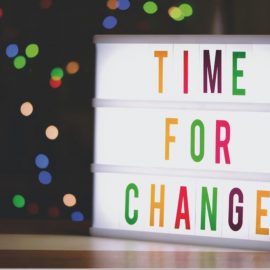
This is a free excerpt from one of Shortform’s Articles. We give you all the important information you need to know about current events and more.
Don't miss out on the whole story. Sign up for a free trial here .
Why are malls dying in the United States? What factors are contributing to their downfall? How can they adapt for the future?
In the 1980s, the mall was a vibrant epicenter in America. Today malls are struggling to survive, their demise fueled by online shopping, large department store closures, and the COVID-19 pandemic. America’s 700 remaining malls are trying to stay alive by modernizing stores and digitizing processes.
Keep reading to learn why malls are struggling and what can be done to revive them.
The Evolution of Malls
In the 1980s, more than 50% of US retail sales occurred in malls. Today, American malls are dying, showing some of the lowest levels of performance and success across all types of commercial real estate.
History of Malls
The rise of the American mall coincided with suburban growth and prosperity in the 1950s, offering a “third place” for communities to congregate beyond the home and workplace. Architect Victor Gruen pioneered the indoor mall concept with the 1956 Southdale Center, sparking a mall-building frenzy across the country. By the 1980s, 1,000 malls were being built in the US each year.
Today, just 700 malls remain, their demise fueled in recent years by online shopping, department store closures, and the COVID-19 pandemic—all of which led to declining foot traffic and, in turn, more store closings. From 2018 through 2020, mall cornerstones like Macy’s, JCPenney, and Sears closed 875 department stores—compared to just 175 closures in 2016 and 2017 combined.
As a result, malls’ value has dropped precipitously. Today:
- 20% of malls financed through commercial mortgage-backed securities are worth less than the amount of money they borrowed.
- Older malls are valued at 50% to 70% less than their peak valuations in 2016.
- Newer, “well-performing” malls are worth 50% less than their 2016 value.
Malls in Transition
Experts say that, in an effort to survive and stay solvent, malls are making a variety of physical and digital changes, including:
- Modernizing outlet malls by recruiting digitally native brands.
- Turning mall kiosks into international retailers hubs.
- Launching pop-up stores.
- Adopting digital technologies such as “endless aisle concepts.”
Malls of the Future
Experts say that for malls to thrive—not just survive—they must seamlessly integrate on- and offline shopping options and give customers an enhanced shopping experience. This “omnichannel approach” might offer:
- Customized virtual shopping opportunities, like shopping by appointment and personalized consultations with expert stylists.
- Curbside pickup, which enables customers who order goods online to pick them up at their local store.
- Contactless payments, which speed up and make payments more secure.
Further, malls need to target products, services, and experiences to consumers based on their preferences, which retailers can identify using data from sources such as Customer Relationship Management systems, apps, WiFi, and GPS. Some experts say that effectively leveraging consumers’ interests will allow malls to reinvent themselves as “consumer engagement spaces” that blend on- and offline retail; cater to different demographic groups’ interests; and prioritize innovation, sustainability, and community connections. Forms these spaces might take include:
- Innovation centers. These “smart” spaces would allow customers to use novel technologies, consult with experts, and potentially exchange personal shopping and product assessment data for discounts on items.
- Values centers would bring together tenants with shared beliefs or identities—such as local designers and craft brewers who care about animal rights and the local community.
- “Retaildential” spaces would integrate retail and housing services to cater to specific demographics, like young urban hipsters or retirees. For example, a space dedicated to older adults might include medical and estate planning services, community rooms, and exercise facilities.
- Destination centers would emphasize immersive experiences such as indoor skiing, roller coaster rides, or museums.

Want to fast-track your learning? With Shortform, you’ll gain insights you won't find anywhere else .
Here's what you’ll get when you sign up for Shortform :
- Complicated ideas explained in simple and concise ways
- Smart analysis that connects what you’re reading to other key concepts
- Writing with zero fluff because we know how important your time is






